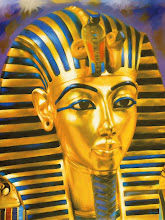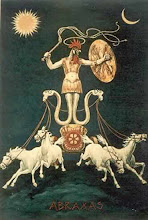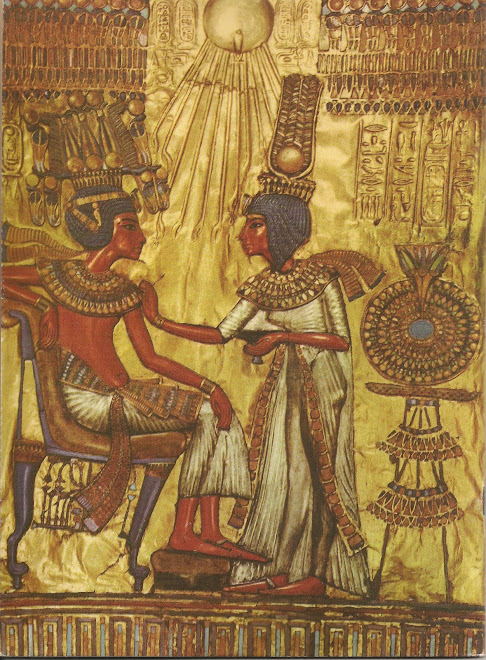Info On The TV Series:
Cosmos: A Personal Voyage is a thirteen-part television series written by Carl Sagan, Ann Druyan, and Steven Soter, with Sagan as presenter. It was executive-produced by Adrian Malone, produced by David Kennard, Geoffrey Haines-Stiles and Gregory Andorfer, and directed by the producers, David Oyster, Richard Wells, Tom Weidlinger, and others. It covered a wide range of scientific subjects, including the origin of life and a perspective of our place in the universe.
The series was first broadcast by the Public Broadcasting Service in 1980 and was the most widely watched series in the history of American public television until The Civil War (1990). As of 2009, it was still the most widely watched PBS series in the world.[1] It won an Emmy and a Peabody Award and has since been broadcast in more than 60 countries and seen by over 500 million people.[2][3] A book was also published to accompany the series.
Overview
Cosmos was produced in 1978 and 1979 by Los Angeles PBS affiliate KCET on a roughly $6.3 million budget, with over $2 million additionally allocated to promotion. The program's format is similar to earlier BBC documentaries like Kenneth Clark's Civilisation, Jacob Bronowski's The Ascent of Man and David Attenborough's Life on Earth. (The BBC — a co-producer of Cosmos — later screened the series, but episodes were cut to fit 50-minute slots.) However, unlike those series, which were shot entirely on film, Cosmos used videotape for interior scenes and special effects, with film being used for exteriors.The series was notable for its groundbreaking use of special effects, which allowed Sagan to seemingly walk through environments that were actually models rather than full-sized sets. The soundtrack included pieces of music provided by Greek composer Vangelis such as Alpha, Pulstar, and Heaven and Hell Part 1 (the last movement serving as the signature theme music for the show, and is directly referenced by the title of episode 4). Throughout the 13 hours of the series, it used many tracks from several 1970s albums such as Albedo 0.39, Spiral, Ignacio, Beaubourg, and China. The worldwide success of the documentary series also put Vangelis' music in the homes of many and brought it to the attention of a global audience.
Turner Home Entertainment purchased Cosmos from series producer KCET in 1989. In making the move to commercial television, the hour-long episodes were edited to shorter lengths, and Sagan shot new epilogues for several episodes in which he discussed new discoveries (and alternate viewpoints) that had arisen since the original broadcast. Additionally, a 14th episode was added which consisted of an interview between Sagan and Ted Turner, and this "new" version of the series was eventually released as a VHS box set. This same re-edited version was also released on 12" Laserdisc, a popular consumer format at the time and precursor to the DVD. Two episodes were released per disc (one episode on each side). The laserdiscs were sold separately, not in a boxed set configuration like the VHS tapes.
Cosmos had long been unavailable after its initial release because of copyright issues with the included music, but was released in 2000 on worldwide NTSC DVD, which includes subtitles in seven languages,[4] remastered 5.1 sound, as well as an alternate music and sound effects track. In 2005, The Science Channel rebroadcast the series for its 25th anniversary with updated computer graphics, film footage, digital sound and updated scientific knowledge that had occurred in the past 25 years. Despite being shown again on the Science Channel, the total amount of time for the original 13 episodes (780 minutes) was reduced 25% to 585 minutes (45 minutes per episode) in order to make room for commercials.[5][6][7]
In 2009, Freemantle Media Enterprises released in the UK, a 5-disc DVD set of the original series plus with bonus science updates. The DVD set was digitally restored and remastered. Although a little grainy in places, it is generally considered to be the best reproduction of the original series to date.[citation needed]
Extract Taken From: http://en.wikipedia.org/wiki/Cosmos:_A_Personal_Voyage
More Info: http://www.facebook.com/pages/EST%C3%89VEZ-SEVEN-Portugal/153443424733225#!/pages/EST%C3%89VEZ-SEVEN-Portugal/153443424733225?sk=info , http://www.imdb.com/title/tt0081846/ & http://213.60.250.189:99/ESTEV/INICIO?WEB=3
Info On The Book:
Cosmos (1980) is a popular science book by astronomer and Pulitzer Prize-winning author Carl Sagan. Its 13 illustrated chapters, corresponding to the 13 episodes of the Cosmos TV series on which the book was based, explore the mutual development of science and civilization. Spurred in part by the popularity of the TV series, Cosmos spent 50 weeks on the Publishers Weekly best-sellers list and 70 weeks on the New York Times Best Seller list to become the best-selling science book ever published at the time. In 1981, it received the Hugo Award for Best Non-Fiction Book. The book's unprecedented success ushered in a dramatic increase in visibility for science-themed literature. The sequel to Cosmos is Pale Blue Dot: A Vision of the Human Future in Space (1994).[1]
Summary
Cosmos has 13 heavily illustrated chapters, corresponding to the 13 episodes of the Cosmos television series.[2] In the book, Sagan explores 15 billion years of cosmic evolution and the development of science and civilization.[3] Cosmos traces the origins of knowledge and the scientific method, mixing science and philosophy, and speculates to the future of science.[4] The book also discusses the underlying premises of science by providing biographical anecdotes about many prominent scientists throughout history, placing their contributions into the broader context of the development of modern science.[5] Cornell News Service characterized the book as "an overview of how science and civilization grew up together."[6]
The book covers a broad range of topics, comprising Sagan's reflections on anthropological, cosmological, biological, historical, and astronomical matters from antiquity to contemporary times. Sagan reiterates his position on extraterrestrial life—that the magnitude of the universe permits the existence of thousands of alien civilizations, but no credible evidence exists to demonstrate that such life has ever visited earth.[7]
Legacy
Cosmos became the best-selling science book ever published in the English language.[12][13][14][15] It was only surpassed in the late 1980s by Stephen Hawking's Brief History of Time.[16] Though spurred in part by the popularity of the television series, Cosmos became a best-seller by itself.[17] Cosmos spent 50 weeks on the Publishers Weekly best-seller's list,[6] where it became the first science book to sell more than half a million copies.[18] The book also spent 70 weeks on the New York Times Best Seller list.[19] Cosmos sold more than 900,000 copies while on the best sellers list and continued to sell well for years later,[20] selling around five million copies internationally.[21] Shortly after Cosmos was published, Sagan received a $2 million advance for the novel Contact.[22] This was the largest release given for an unwritten fiction book at the time.[18] The success of Cosmos made Sagan "wealthy as well as famous."[23] It also ushered in a dramatic increase in visibility for science books.[20] Science historian Bruce Lewenstein of Cornell University noted that among science books "Cosmos marked the moment that something different was clearly going on."[17]
Lewenstein also noted the power of the book as a recruitment tool. Along with Microbe Hunters and The Double Helix, he described Cosmos as one of the "books that people cite as 'Hey, the reason I'm a scientist is because I read that book'."[17] Particularly in astronomy and physics, he said, the book inspired many people to become scientists.[22]
Extracts Taken From: http://en.wikipedia.org/wiki/Cosmos_(book)
More Info: http://www.gradiva.pt/?q=C/BOOKSSHOW/1273 (paperback without illustrations - capa fina, só texto...)





.jpg)
.jpg)









+001.jpg)

+001.jpg)










+001.jpg)
+001.jpg)
+001.jpg)
+001.jpg)



+001.jpg)

+001.jpg)
+001.jpg)

+001.jpg)
.jpg)



Sem comentários:
Enviar um comentário
Nota: só um membro deste blogue pode publicar um comentário.